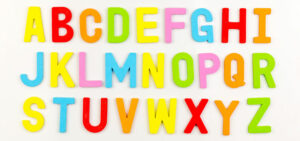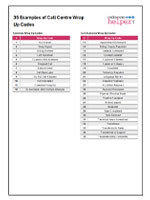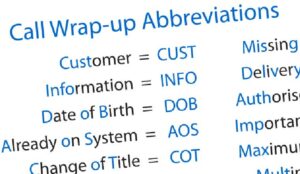What is a Wrap-Up Code?
A wrap-up code is a predefined label used in contact centres to categorise the outcome of a call or interaction. They will include details such as why the contact was made, what the outcome was, and whether any further action is required.
They streamline reporting, improve call handling efficiency, and provide valuable insights into customer interactions and contact centre performance.
Wrap-up codes are typically selected from a drop-down list of predefined options, providing concise details about the call, such as:
- The purpose of the contact
- The outcome of the interaction
- Whether further action is needed
These codes streamline the reporting process and provide a consistent way to summarise call data, providing valuable insights into customer interactions and contact centre performance. For instance, a standard set of wrap-up codes might include:
- Call Type: Inbound, Billing Query
- Outcome: Query Resolved
- Next Action: N/A
In most automatic call distribution (ACD) systems, agents are placed in a “not-ready” state after a call, preventing new calls from being routed to them. This period, known as after-call work (ACW), allows agents to complete tasks such as inputting wrap-up codes.
The Role of Wrap-Up Codes in After-Call Work (ACW)
During wrap time, agents may also attach detailed notes to a customer’s file if additional information needs to be recorded. However, wrap-up codes are intended to capture broad, general details rather than detailed call specifics.
Some calls are harder to categorise due to a lack of a suitable code. Regular audits can help identify uncategorised call types and ensure wrap-up codes remain relevant.
Over time, unused or outdated codes should be removed as processes evolve. This ensures agents only deal with a concise and meaningful list of codes, speeding up call handling and reducing errors.
In some contact centres, the accuracy of wrap-up codes is used as a Key Performance Indicator (KPI) for agents. Evaluating call codes during quality assurance checks can reinforce their importance and ensure accuracy.
Examples of Call Centre Wrap Up Codes
Common Wrap Up Codes
- No Answer
- Busy Signal
- Wrong Number
- Left Voicemail
- Customer Not Available
- Dropped Call
- Disconnected
- Call Back Later
- Do Not Call Request
- Not Interested
- Customer Hung Up
- Unreachable After Multiple Attempts
Call Outcome Wrap Up Codes
- Appointment Scheduled
- Billing Enquiry Resolved
- Callback Scheduled
- Contact Updated
- Customer Satisfied
- Customer Unhappy
- Escalated
- Follow-Up Required
- Language Barrier
- Negative Feedback
- No Action Required
- Payment Processed
- Payment Promise Made
- Positive Feedback
- Refund Issued
- Resolved
- Sale Completed
- Sale Declined
- Technical Issue Unresolved
- Transferred
- Transferred to Sales
- Transferred to Support
- Troubleshooting Completed
DOWNLOAD
Printable – 35 Examples of Call Centre Wrap Up Codes
Do you want to download this to share with your team?
Get your free download of 35 Examples of Call Centre Wrap Up Codes now:
Key Benefits of Wrap-Up Codes
Wrap-up codes provide valuable insights at both the individual customer level and the contact centre level, benefiting service quality, planning, and performance tracking.
Here are a few of the benefits of using wrap up codes:
Customer Insights
Because wrap-up codes can be linked to specific customers, they give at-a-glance information about that customer’s history with your business.
For example:
- Are they frequent callers?
- Have they previously complained about your service?
This information allows you to tailor interactions and improve service quality.
Actionable Follow-Ups
Wrap-up codes can trigger additional tools. For example, when a call is tagged as “follow-up required,” agents can schedule a callback and set reminders for future action.
Managerial Insights
Wrap-up codes also give managers a broad overview of contact centre performance.
For example:
- Tracking the number of sales closed over a week can inform strategy.
- A spike in calls marked “disconnected” may flag a technical issue needing immediate attention.
Consistency and Accuracy
Another major advantage is that wrap-up codes maintain consistency in how agents record call types. This makes it easier for planners to categorise calls and chart the success of different call types at different times.
Top Tips for Using Wrap-Up Codes
To get the most out of your wrap-up codes, follow these best practices:
Use Simple, Familiar Language
Define codes in terms that align with customer language. Provide examples for agents to reference when selecting a code.
Simplify the List
Avoid having too many codes. While additional options provide more insight, they can overwhelm agents and lead to less accurate selections.
Enable Quick Selection
Use numeric shortcuts for codes in addition to dropdowns. With practice, most agents can memorise up to 20 codes, saving time during ACW.
Allow Multiple Codes Per Call
Enable agents to apply more than one code if multiple outcomes occur.
Flexible Categorisation
Provide an “Other” option for calls that don’t fit predefined categories, allowing agents to add custom comments. This avoids misclassification and preserves data integrity.
Capture Customer Sentiment
Experiment with codes that reflect customer emotions during the call. Knowing how customers feel (e.g., frustrated, satisfied) adds another layer of insight.
Wrap Up-Code Abbreviations
We have also produced a comprehensive list of 541 of the contact centre abbreviations, in a contact centre abbreviations that can be used to speed wrap-up time.
Author: Megan Jones
Reviewed by: Robyn Coppell
Published On: 15th Jul 2016 - Last modified: 3rd Dec 2024
Read more about - Definitions, After Call Work (ACW), Call Handling, Downloads, Printable
















